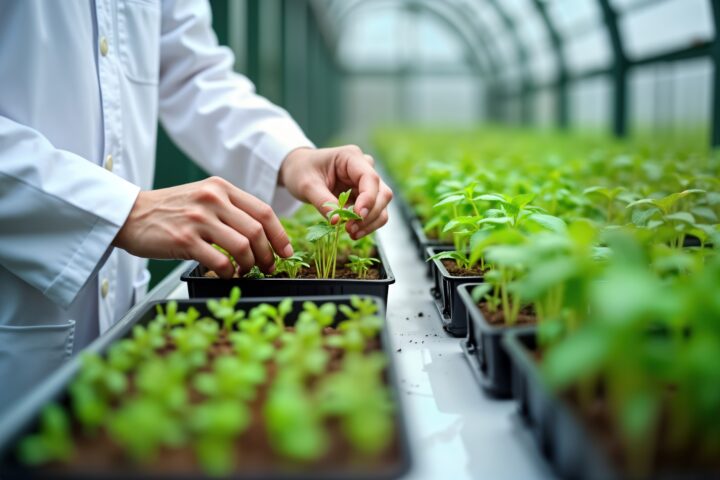
Genetically modified plants contribute to the fight against global warming
The large-scale cultivation of genetically modified crops would counteract global warming. American and German researchers come to this conclusion in a study.
Thursday, March 17, 2022
Agriculture also contributes to climate change. About 25% of global greenhouse gas emissions are attributed to agricultural production, most of them to livestock farming and fertilization. About a third of the climate impact of agriculture is due to changes in land use, for example expanding agricultural land at the expense of biodiversity-rich areas. These often contain large amounts of bound carbon, which is then released, for example, through slash and burn. The continued high demand for agricultural raw materials is driving the expansion of arable land. A reduction of this pressure would therefore have a positive effect on the climate. European agriculture could also contribute to this, as a new study by the University of Bonn and the California breakthrough Institute led by Matin Qaim shows.
The researchers describe that the cultivation of genetically modified crops already available today, such as maize, rape or sugar beet, saved around 33 million tons of CO2 equivalents each year in the EU. This represents 7.5% of agricultural greenhouse gas emissions in the EU. Due to unfavorable conditions, only a few EU countries, such as Spain and Portugal, are currently cultivating genetically modified crops.
The main reason for these potential savings is the higher yields that can be achieved with genetically modified varieties. Experience in other countries has shown that the average increase in yields is 22%, but it can fluctuate strongly depending on the crop and the region of production. In moderate latitudes, as in Europe, yield benefits of 7-10% are realistic. Higher productivity in Europe would reduce dependence on imports, increase agricultural exports, and thus reduce the need for further expansion of global agricultural land. In addition, genetically modified plants also offer direct climate benefits, such as a reduced need for crop protection and tillage, which translates into reduced fuel consumption.
The authors point out that the skepticism about genetically modified plants in Europe has led to restrictive conditions that make cultivation almost impossible. The main reason for this is hypothetical risks that are not documented in the cultivation practices of other countries. As a result, the actual benefits of these plants, such as increases in yields and positive climate effects, cannot be exploited. The scientists are concerned about the EU's intention to significantly increase the land share of organic farming by means of the «Green Deals’, thereby further reducing agricultural production. This does not remedy adverse climate effects, but simply moves them abroad. The researchers call for greater use to be made of the resources available for productive agriculture in Europe. This includes modern breeding methods to increase the performance and productivity of agriculture.
Sources
Related articles

Biotechnology has only just begun
When Frank Schirrmacher cleared the pages of the Frankfurter Allgemeine Zeitung's arts section on 27 June 2000 to publish the human genome, which had just been deciphered for the first time, letter by letter over six pages, biotechnology came to the attention of the general public for the first time.

Genetic engineering? Yes, of course.
As a consumer, you often don't know: products advertised as GMO-free have long contained genetic engineering. This is a thorn in the side of opponents of genetic engineering. But it is easier to keep quiet about the ‘scandal’ – because something we have been eating for a long time no longer scares us.

Vegan alternatives thanks to genetic engineering
How can we feed a growing global population in a sustainable way? The answer increasingly lies in laboratories and genetic engineering. Whether it's lab-grown milk, vegan squid or farmed salmon – genetic engineering is everywhere. It's high time to dispel the old myths.

Only half the truth in the genetic engineering debate
Those who only see the risks remain blind to the opportunities offered by a new technology. Opponents of genetic engineering have presented a new survey on new breeding methods, which reveals some telling gaps.

